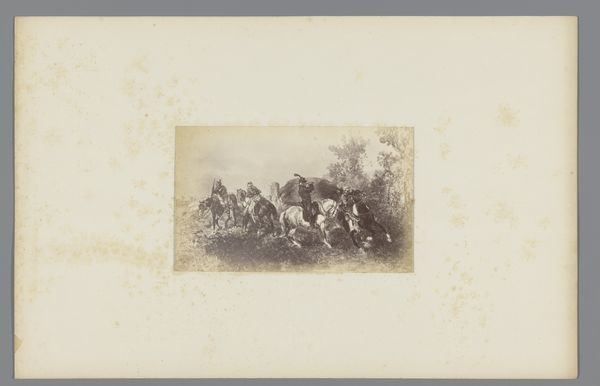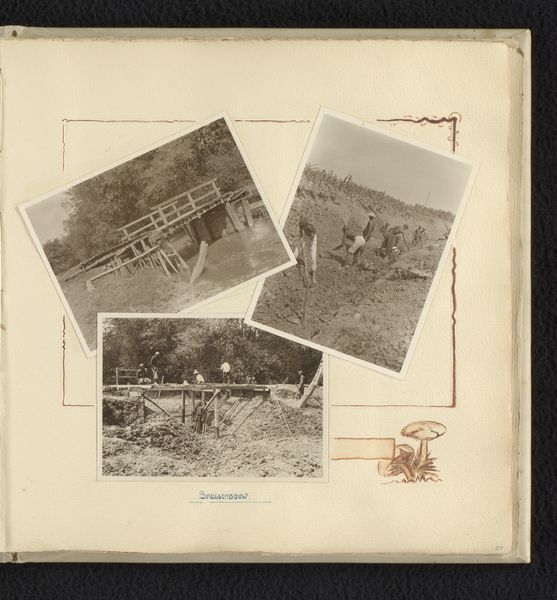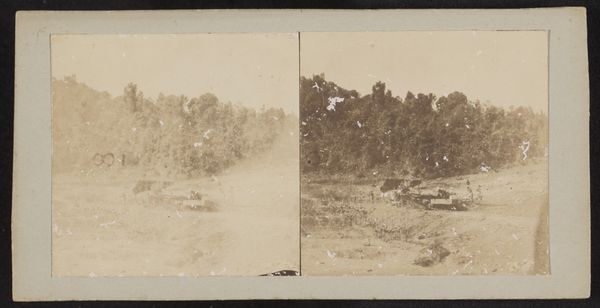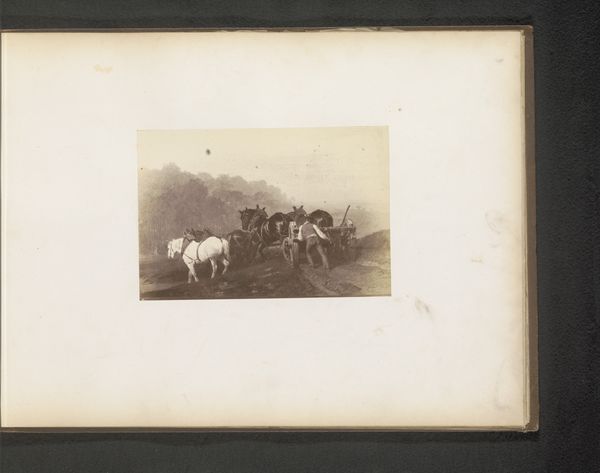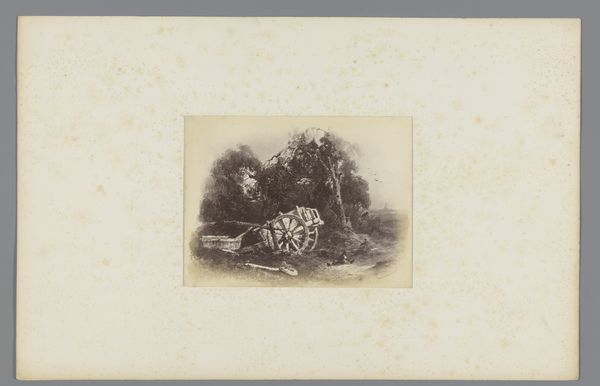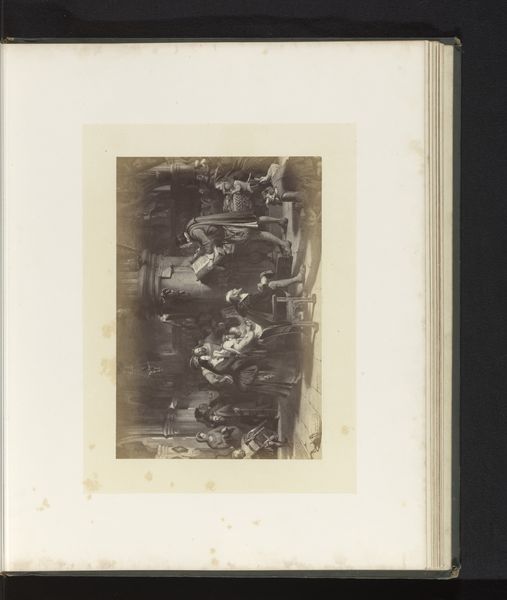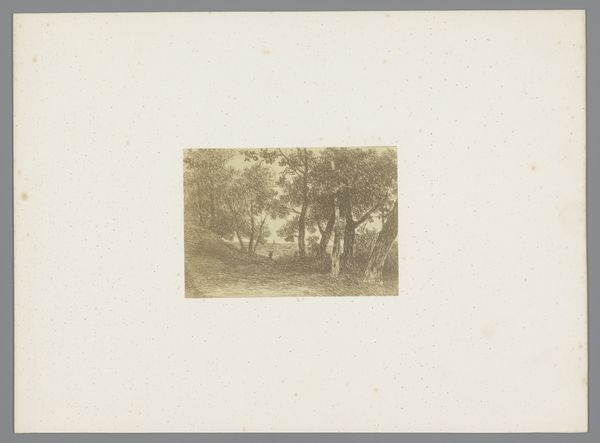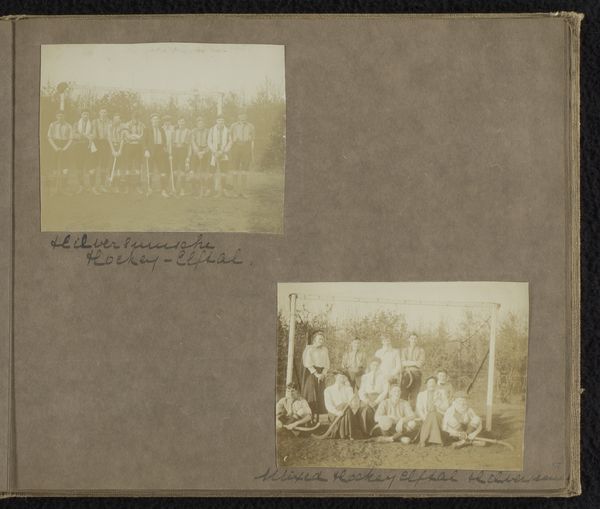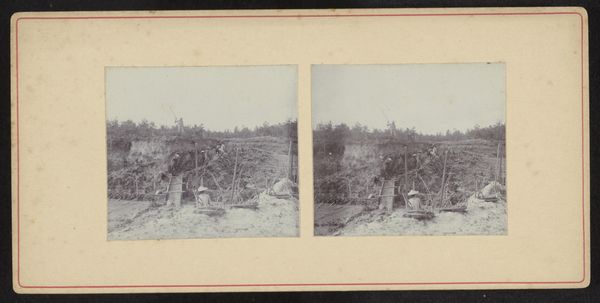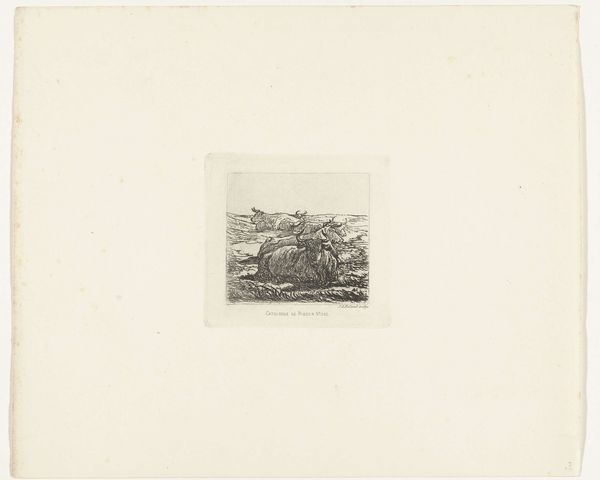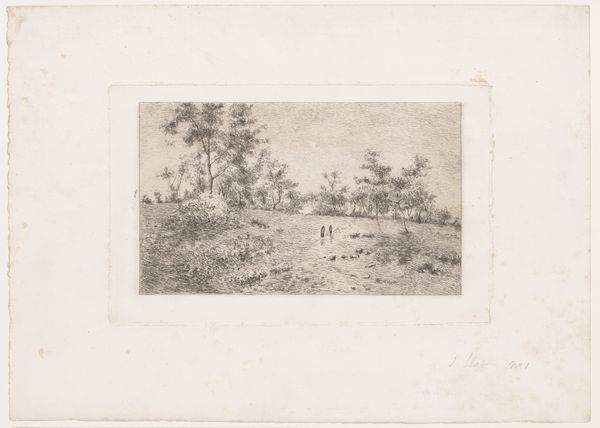
Fotoreproductie van het schilderij 'Volewijk' door Mari ten Kate c. 1866 - 1871
0:00
0:00
bingerchits
Rijksmuseum
photography, gelatin-silver-print
#
portrait
#
dutch-golden-age
#
impressionism
#
photography
#
gelatin-silver-print
#
genre-painting
#
realism
Dimensions: height 136 mm, width 260 mm
Copyright: Rijks Museum: Open Domain
Curator: This gelatin silver print is a photographic reproduction of Mari ten Kate’s painting “Volewijk,” created around 1866-1871 and now held in the Rijksmuseum collection. Editor: It looks like a hazy dreamscape, almost… a gathering of ghosts perhaps in a liminal space. All very sepia and soft-focused, giving a sense of vanished time. Curator: The "Volewijk" referred to in the title was originally located just north of Amsterdam, until it became part of the neighborhood known as Amsterdam-Noord, reflecting on themes popular during the Dutch Golden Age where genre paintings capturing everyday scenes offered both moral lessons and records of ordinary life. Editor: Oh, I can see that now, a record! But with a soft lens, it softens all edges, gives it a melancholy tone as well. Do you think it was originally made to look that way? I mean, the painting, was it as blurry as this reproduction seems? Curator: I wonder… photography, particularly in this era, sought to mimic the aesthetics and compositional strategies of painting, aspiring to attain similar artistic status, to replicate and popularize existing artworks. In this case it would be capturing the social dynamics and visual customs of the Netherlands in the second half of the 19th century. Editor: Mimicry, yes. Almost like longing—photographs always seem to hint at something just out of reach. All the visual details try and capture real life but seem so staged; a scene frozen in time. And the placement of that rustic directional sign – adding an interesting visual component in this landscape…a journey in the unknown? Curator: Or simply indicating where people are meant to be going, even in their leisure! The photograph does manage to bring up various narrative associations, I have to agree. There is a tension there; the realism the work attempts contrasts with the aesthetic blur, inviting further exploration, in an otherwise familiar domestic theme. Editor: True! A common story is sometimes more powerful in its suggestive elements than clear, explicit illustration. Thank you. That gave me a lot to think about...
Comments
No comments
Be the first to comment and join the conversation on the ultimate creative platform.
